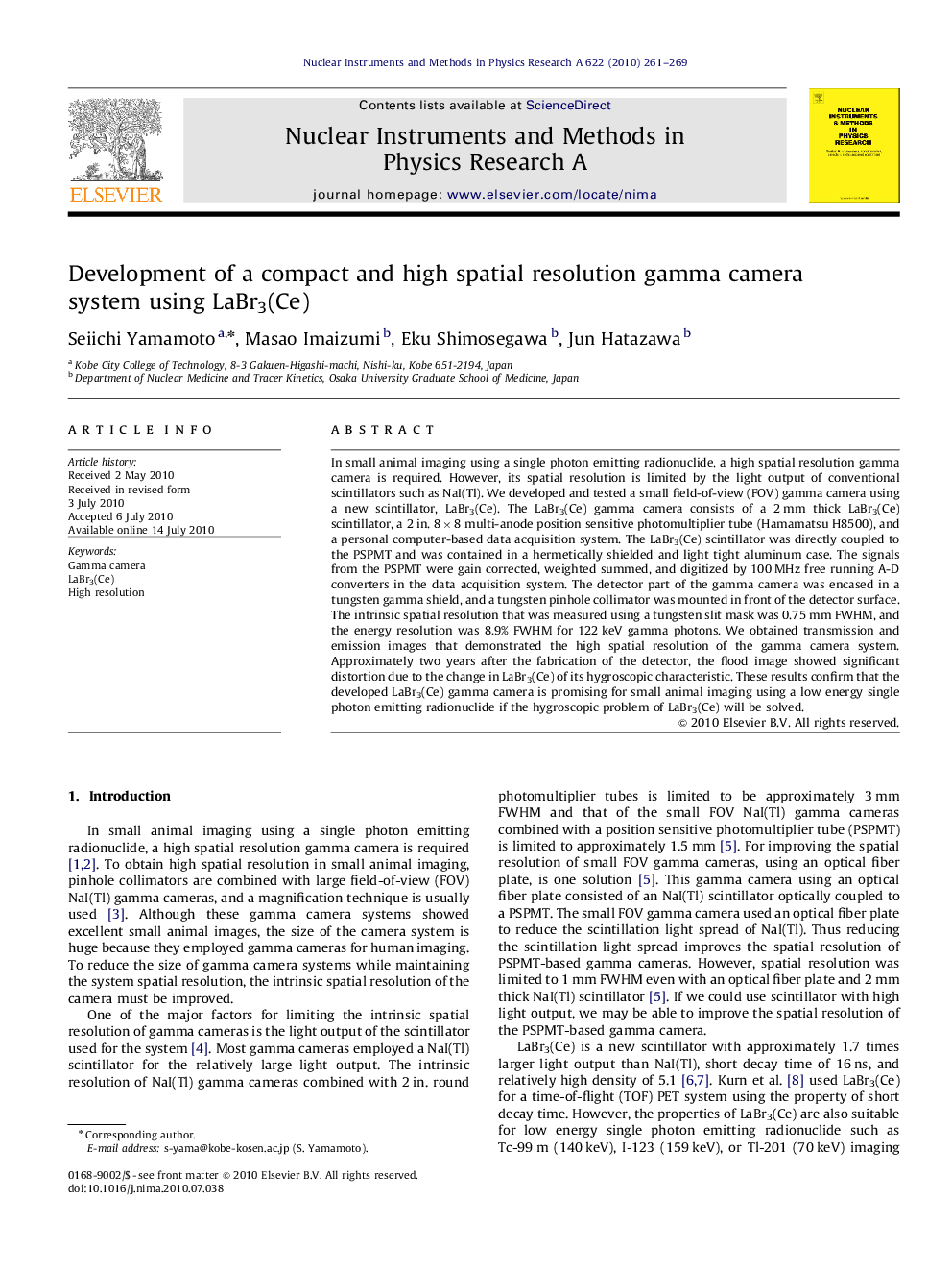| Article ID | Journal | Published Year | Pages | File Type |
|---|---|---|---|---|
| 10715906 | Nuclear Instruments and Methods in Physics Research Section A: Accelerators, Spectrometers, Detectors and Associated Equipment | 2010 | 9 Pages |
Abstract
In small animal imaging using a single photon emitting radionuclide, a high spatial resolution gamma camera is required. However, its spatial resolution is limited by the light output of conventional scintillators such as NaI(Tl). We developed and tested a small field-of-view (FOV) gamma camera using a new scintillator, LaBr3(Ce). The LaBr3(Ce) gamma camera consists of a 2Â mm thick LaBr3(Ce) scintillator, a 2Â in. 8Ã8 multi-anode position sensitive photomultiplier tube (Hamamatsu H8500), and a personal computer-based data acquisition system. The LaBr3(Ce) scintillator was directly coupled to the PSPMT and was contained in a hermetically shielded and light tight aluminum case. The signals from the PSPMT were gain corrected, weighted summed, and digitized by 100Â MHz free running A-D converters in the data acquisition system. The detector part of the gamma camera was encased in a tungsten gamma shield, and a tungsten pinhole collimator was mounted in front of the detector surface. The intrinsic spatial resolution that was measured using a tungsten slit mask was 0.75Â mm FWHM, and the energy resolution was 8.9% FWHM for 122Â keV gamma photons. We obtained transmission and emission images that demonstrated the high spatial resolution of the gamma camera system. Approximately two years after the fabrication of the detector, the flood image showed significant distortion due to the change in LaBr3(Ce) of its hygroscopic characteristic. These results confirm that the developed LaBr3(Ce) gamma camera is promising for small animal imaging using a low energy single photon emitting radionuclide if the hygroscopic problem of LaBr3(Ce) will be solved.
Keywords
Related Topics
Physical Sciences and Engineering
Physics and Astronomy
Instrumentation
Authors
Seiichi Yamamoto, Masao Imaizumi, Eku Shimosegawa, Jun Hatazawa,
